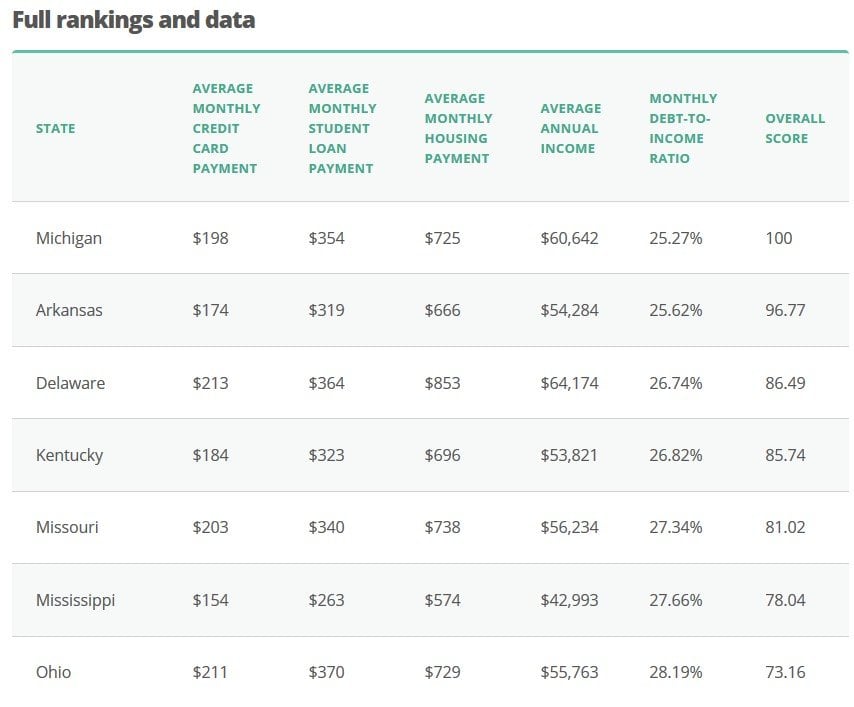No matter what state you live in, there’s a good chance you carry some kind of debt. However, it might never have occured to you that the state you live in can have a big impact on how much you spend on debt payments. A recent study by Credible examined credit card bills, student loan debt, and housing costs for individuals in all 50 states. The results show a variety of differences that might surprise you.
Debt-to-Income Measurement
Using proprietary data, the study looked at debt compared to monthly income. Information from over 540,000 borrowers was used to calculate average monthly credit card, student loan, and housing payments as a percentage of average monthly income (debt-to-income ratio). The higher the number, the more you pay as a percentage of your income each month towards debt payments.
Lowest Debt-to-Income States
The states with the lowest debt-to-income were Michigan, Arkansas, Delaware, Kentucky, and Missouri. According to the Credible dataset, those living in Michigan spend only 25.3% of their monthly income on credit card, student loan, and housing debt each month.
Highest Debt-to-Income States
The states with the highest debt-to-income ratios are places where the cost of living is typically higher. Hawaii, Washington, Colorado, Oregon, and Montana had the highest average debt-to-income ratios. In Hawaii you probably spend about 36.2% of their monthly income on credit card, student loan, and housing payments.
Real Dollar Numbers
Another way to break down the data is by average monthly income and how much of that goes towards debt payments. The differences can be significant. For example:
- In Arkansas, the average annual income is $54,284 of which $13,907 goes towards debt payments.
- In Washington, the average annual income is $63,028 of which $20,421 goes towards debt payments.
National Averages
Other interesting data points are national averages. How does your financial profile stack up? In the study dataset, these were the results:
- $207 - Average monthly credit card payment
- $370 - Average monthly student loan payment
- $906 - Average monthly housing payment
Conclusions
Although the numbers are compelling, it’s important not to generalize. Each person’s debt is highly personal. Still, where you live definitely has an impact. If you have a lower debt-to-income ratio than your state’s average, then good for you. If not, maybe you should be looking for ways to lower your monthly debt payment.
Check out the full Credible report: Burdened by Debt: The Best and Worst States at Managing Debt.






